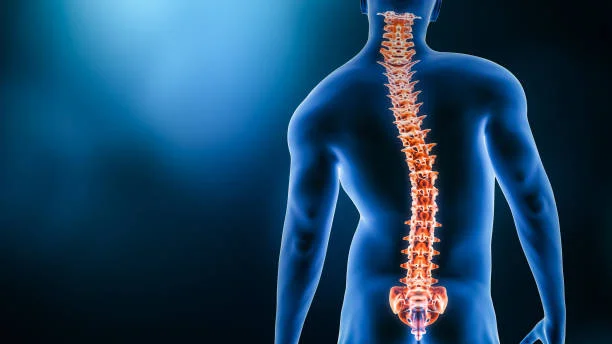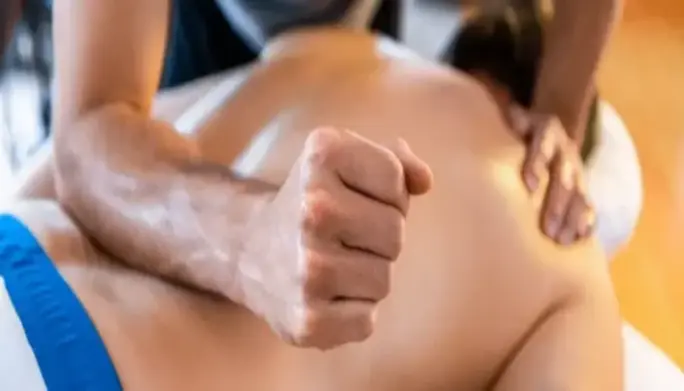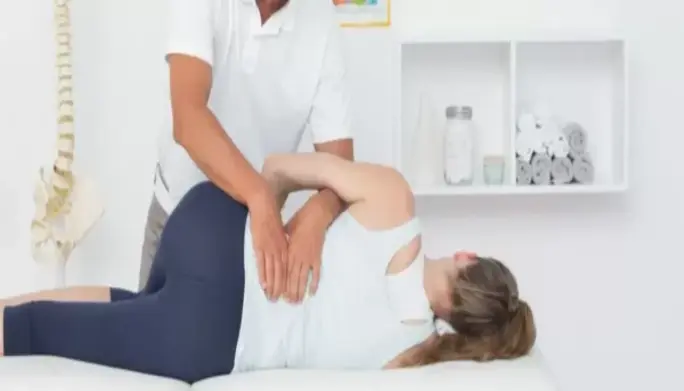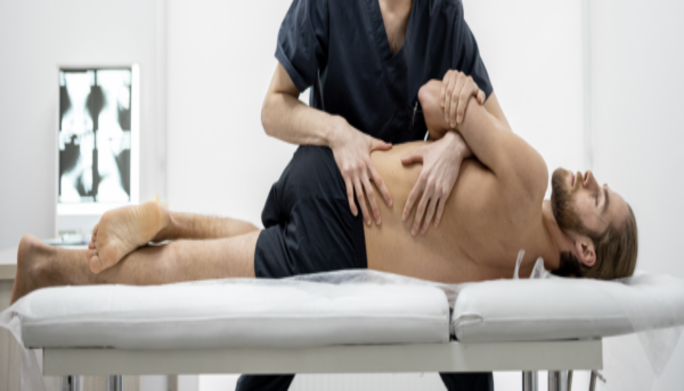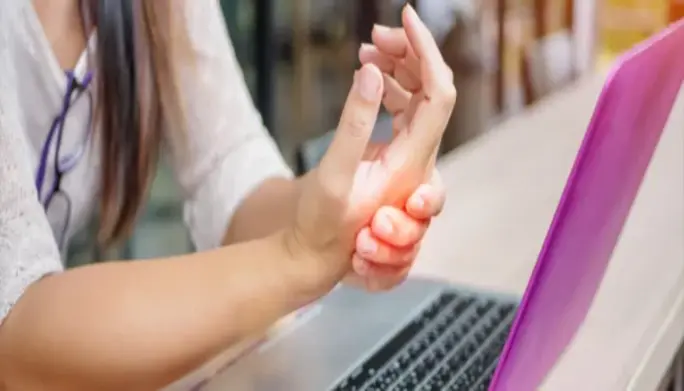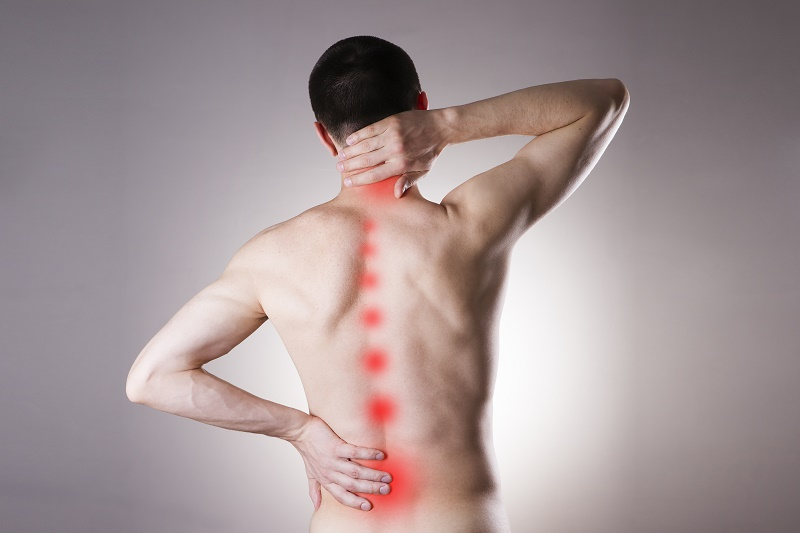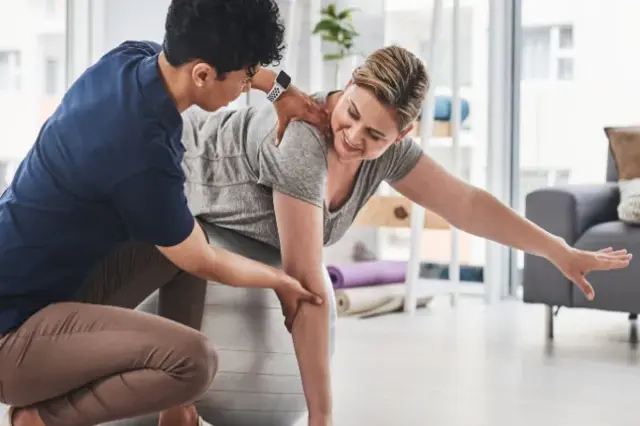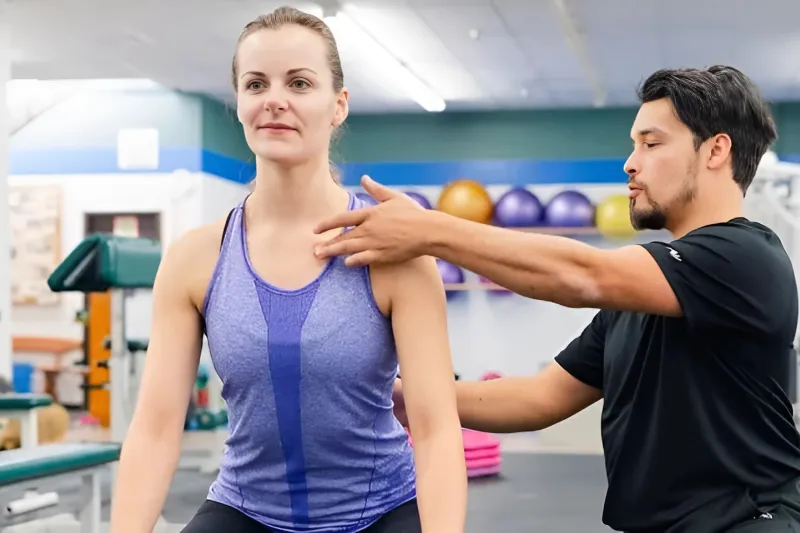Pomona, NY and Woodmere, NY
2 Oak Ridge Ct, Pomona, NY 10970
P: (516) 220-5125
scoliosiscaretherapy@gmail.com
Physical Therapy Pomona, NY and Woodmere, NY
Experience Expert Care Tailored to Your Posture Needs
At Care Physical Therapy of Rockland, we provide personalized, non-invasive treatments that work with your body’s natural healing ability to deliver long-term relief from posture issues and scoliosis.
Top Rated Physical Therapists in Pomona, NY and Woodmere, NY
If you’re struggling with poor posture or scoliosis, we’re here to provide expert care tailored to your needs. Our team specializes exclusively in helping individuals correct posture-related issues with a focus on lasting results. Every treatment plan is thoughtfully designed to address symptoms like slouching, rounded shoulders, forward head posture, or spinal discomfort.
We believe in empowering patients through education, equipping you with the tools to improve your posture and maintain your progress. Our goal is to help you achieve long-term results—so you won’t need us again.
Conditions We Treat
Personalized Care From Our Team
No two individuals are exactly alike, and posture or spinal issues can vary widely, even with similar symptoms. Our specialized team will thoroughly assess your unique condition and design a personalized plan to help you stand taller, feel stronger, and move better. We’re dedicated to guiding you through every session with focused attention and unwavering support.
Our Proven 4-Phase Recovery Program

Pain Relief

Prime Your Body

Perform at Your Best

Prevent Future Issues
Qualified and Experienced
Why Choose Care Physical Therapy of Rockland?
Expert Care: Dr. Eli Dinewitz and our team of professionals are highly trained and experienced in treating a wide range of musculoskeletal conditions.
Personalized Approach: We understand that every individual is unique, which is why we develop customized treatment plans tailored to your specific needs and goals.
Compassionate Support: We believe in fostering a supportive and nurturing environment where you feel empowered on your path to recovery.
Convenient Location: Located at 2 Oak Ridge Court, Pomona, NY, 10970, our clinic offers easy access and ample parking for your convenience.
Treatments
Kyphosis Rehabilitation
Living with slouching, limited mobility, or discomfort caused by kyphosis doesn’t have to be your reality. Our targeted kyphosis rehabilitation program is designed to help you improve posture..
Read More
Lordosis Rehabilitation
Are you struggling with persistent lower back pain, a pronounced spine curve, or symptoms like a forward pelvis, rounded shoulders, or stomach protrusion? With proper rehabilitation, you can find relief..
Read More
Scoliosis Rehabilitation
Living with scoliosis doesn’t mean living with limitations. Whether you’re seeking care for yourself or your child, Care PT of Rockland’s specialized scoliosis rehabilitation program offers hope ..
Read More
Physical Therapy
From weekend warriors dealing with nagging pain to aging adults hoping to remain independent, patients choose Care PT of Rockland for customized physical therapy delivered with compassion ..
Read More
Postural Assessment & Training
Transform your posture, transform your life. At Care PT of Rockland in Pomona, NY and Woodmere, NY our specialized Postural Assessment & Training program helps adults and children overcome …
Read More
Spinal Manipulation
If back or neck pain is interfering with daily life, the spinal manipulation experts at Care PT of Rockland can help. Our licensed specialists employ safe, controlled manual techniques to improve ..
Read More
Stand Tall and Move Comfortably in Pomona, NY and Woodmere, NY
At Care Physical Therapy of Rockland, we understand how frustrating and limiting spinal issues such as scoliosis and poor posture can be. Symptoms like slouching, rounded shoulders, forward head posture, hips tilting forward, pigeon toes, or even issues like heavy breathing and constipation due to spinal curvature don’t have to hold you back. We specialize in addressing these posture-related challenges, helping you achieve real, lasting results.
Here’s how we help:
- Share your story.
- Receive a customized plan tailored to your needs.
- Correct your posture and relieve pain.
- Achieve long-lasting results and reclaim your life.
Testimonials

They are an amazing staff; they really care about you and your needs. They can take care of any concerns you have while taking the time to thoroughly explain the medical care that you need.

Very welcoming, knowledgeable, and thorough. I was able to voice my concerns and was given the care needed to resolve them. Very cost-efficient care.



Advanced Posture and Spine Therapy Programs
We provide high-quality therapy programs tailored to your needs, using advanced techniques to improve posture and spinal health.
Our services include Manual Therapy, Spinal Manipulation, and Ergonomic Assessment & Training. Each program begins with targeted treatments to reduce discomfort and improve mobility.
As you progress, we incorporate personalized postural training and functional exercises. Finally, we emphasize preventative care, ensuring long-term results and helping you maintain your strength and alignment.
Frequently Asked Questions
What should I expect during physical therapy sessions?
Physical therapy sessions typically involve an assessment of your condition, manual techniques to improve mobility and flexibility, individualized exercises and activities to help you reach your goals, education on how to prevent further injury or pain, and instruction on proper posture, body mechanics and other lifestyle changes.
What do I need to wear or bring with me?
You should dress in comfortable, loose clothing that allows you to move easily and doesn’t restrict circulation. Depending on your condition, your physical therapist may also recommend special shoes or a brace. You should also bring any paperwork related to your medical history, including x-rays, ultrasounds, and doctor’s notes.
How long will my physical therapy sessions last?
Sessions typically last 30-60 minutes depending on your condition and the types of techniques used. Your physical therapist will give you an estimate when you first arrive for your appointment.
What if I have questions after my physical therapy session?
Your physical therapist should be available to answer any questions or concerns you may have about your treatment plan before and after each visit. You can also contact the clinic directly for further assistance. We want you to get the most out of every session!
How often will I need to attend physical therapy sessions?
The frequency of visits will depend on your individual goals and condition, but typically it is recommended that patients attend 2-3 times per week for a minimum of 4-6 weeks in order to maximize results. Your therapist will provide more details during your initial appointment.
How long will it take for me to see results?
Every person’s situation is unique; therefore the amount of time needed to reach goals varies. With commitment and dedication from both you and your physical therapist, you can expect to start seeing results within a few weeks. The more positive lifestyle changes you make, the faster your progress will be!
What if I feel too much pain during a session?
If at any time during your physical therapy session you experience increased pain, it’s important to let your therapist know so they can adjust the intensity or technique as necessary. Your therapist will work with you to make sure that treatment is comfortable and effective for you
Is there anything I can do before my appointment to prepare?
Yes! Make sure you arrive for your session well-rested so that you can give it your full attention and energy. It is also helpful if you keep track of how much pain medication (if any) you take prior to the appointment so that the physical therapist can adjust the intensity of treatment accordingly.
Can I see a physical therapist without a doctor’s referral in New York?
Yes, you can! In New York State, you have direct access to physical therapy, which means you can see a licensed physical therapist without a doctor’s referral. This allows you to start your treatment right away, saving time and helping you address pain or movement issues sooner. However, direct access has some limitations: you may receive physical therapy treatment without a prescription for up to 10 visits or 30 days, whichever comes first. After that, if more treatment is necessary, we’ll help you coordinate with a physician to continue your care. Our clinic in Pomona, NY, is here to answer any further questions you may have about direct access or to help you get started with your first appointment.
Are there any exercises I can do at home between appointments to help improve my condition?
Yes! Your physical therapist may provide specific exercise recommendations for you to try in between visits, which will help speed up your recovery and progress faster toward reaching your goals. It’s important to follow these carefully and always check with your PT before starting a new exercise program if you have any questions or concerns.
Will insurance cover my physical therapy?
Insurance coverage for physical therapy varies depending on your specific plan. As an out-of-network clinic, our services may still be partially reimbursed by your insurance provider, depending on your out-of-network benefits. We encourage you to contact your insurance company to understand your coverage options, including any potential reimbursement rates and fees. Our team can provide you with a detailed receipt (often called a “superbill”) after each session, which you can submit to your insurance provider for reimbursement if your plan allows. Since we operate outside the restrictions of insurance networks, we have the freedom to prioritize personalized, one-on-one care without the limitations on session length or frequency often imposed by insurance plans. This approach allows us to fully tailor each treatment to your specific needs, ensuring that we can address your goals effectively and thoroughly.
Will my physical therapist be able to answer any questions I have about my condition?
Yes! Your physical therapist should be available to discuss any concerns or questions you have regarding your condition or treatment plan. Don’t hesitate to bring up any issues that may arise during the course of therapy.
How will I know when I no longer need physical therapy?
Your physical therapist should be able to provide guidance on when it is appropriate to stop attending physical therapy sessions based on your progress, goals, and overall health status. It’s important to listen to your therapist and continue with treatment until they feel you are ready to move on.
What should I expect during physical therapy sessions?
Physical therapy sessions typically involve an assessment of your condition, manual techniques to improve mobility and flexibility, individualized exercises and activities to help you reach your goals, education on how to prevent further injury or pain, and instruction on proper posture, body mechanics and other lifestyle changes.
Can I see a physical therapist without a doctor’s referral in New York?
Yes, you can! In New York State, you have direct access to physical therapy, which means you can see a licensed physical therapist without a doctor’s referral. This allows you to start your treatment right away, saving time and helping you address pain or movement issues sooner. However, direct access has some limitations: you may receive physical therapy treatment without a prescription for up to 10 visits or 30 days, whichever comes first. After that, if more treatment is necessary, we’ll help you coordinate with a physician to continue your care. Our clinic in Pomona, NY, is here to answer any further questions you may have about direct access or to help you get started with your first appointment.
What do I need to wear or bring with me?
You should dress in comfortable, loose clothing that allows you to move easily and doesn’t restrict circulation. Depending on your condition, your physical therapist may also recommend special shoes or a brace. You should also bring any paperwork related to your medical history, including x-rays, ultrasounds, and doctor’s notes.
Is there anything I can do before my appointment to prepare?
Yes! Make sure you arrive for your session well-rested so that you can give it your full attention and energy. It is also helpful if you keep track of how much pain medication (if any) you take prior to the appointment so that the physical therapist can adjust the intensity of treatment accordingly.
How long will my physical therapy sessions last?
Sessions typically last 30-60 minutes depending on your condition and the types of techniques used. Your physical therapist will give you an estimate when you first arrive for your appointment.
Are there any exercises I can do at home between appointments to help improve my condition?
Yes! Your physical therapist may provide specific exercise recommendations for you to try in between visits, which will help speed up your recovery and progress faster toward reaching your goals. It’s important to follow these carefully and always check with your PT before starting a new exercise program if you have any questions or concerns.
What if I have questions after my physical therapy session?
Your physical therapist should be available to answer any questions or concerns you may have about your treatment plan before and after each visit. You can also contact the clinic directly for further assistance. We want you to get the most out of every session!
Will insurance cover my physical therapy?
Insurance coverage for physical therapy varies depending on your specific plan. As an out-of-network clinic, our services may still be partially reimbursed by your insurance provider, depending on your out-of-network benefits. We encourage you to contact your insurance company to understand your coverage options, including any potential reimbursement rates and fees. Our team can provide you with a detailed receipt (often called a “superbill”) after each session, which you can submit to your insurance provider for reimbursement if your plan allows. Since we operate outside the restrictions of insurance networks, we have the freedom to prioritize personalized, one-on-one care without the limitations on session length or frequency often imposed by insurance plans. This approach allows us to fully tailor each treatment to your specific needs, ensuring that we can address your goals effectively and thoroughly.
How often will I need to attend physical therapy sessions?
The frequency of visits will depend on your individual goals and condition, but typically it is recommended that patients attend 2-3 times per week for a minimum of 4-6 weeks in order to maximize results. Your therapist will provide more details during your initial appointment.
How long will it take for me to see results?
Every person’s situation is unique; therefore the amount of time needed to reach goals varies. With commitment and dedication from both you and your physical therapist, you can expect to start seeing results within a few weeks. The more positive lifestyle changes you make, the faster your progress will be!
Will my physical therapist be able to answer any questions I have about my condition?
Yes! Your physical therapist should be available to discuss any concerns or questions you have regarding your condition or treatment plan. Don’t hesitate to bring up any issues that may arise during the course of therapy.
What if I feel too much pain during a session?
If at any time during your physical therapy session you experience increased pain, it’s important to let your therapist know so they can adjust the intensity or technique as necessary. Your therapist will work with you to make sure that treatment is comfortable and effective for you
How will I know when I no longer need physical therapy?
Your physical therapist should be able to provide guidance on when it is appropriate to stop attending physical therapy sessions based on your progress, goals, and overall health status. It’s important to listen to your therapist and continue with treatment until they feel you are ready to move on.



